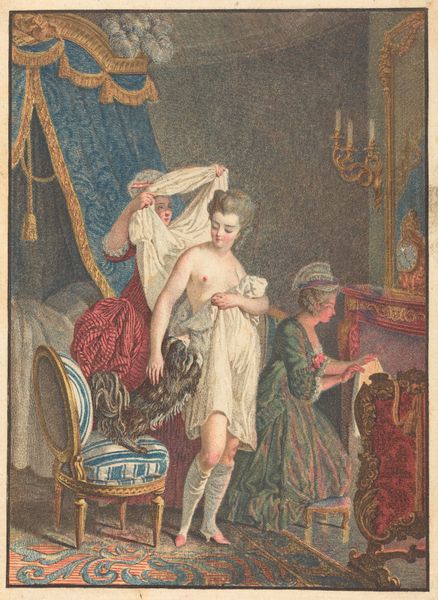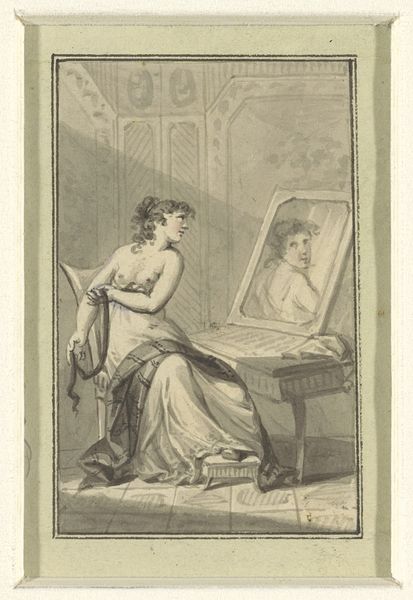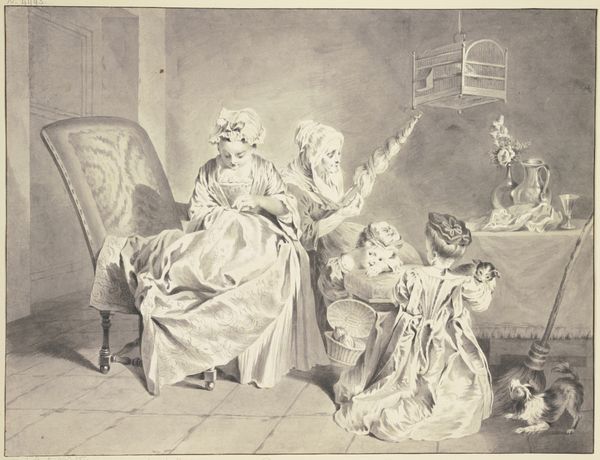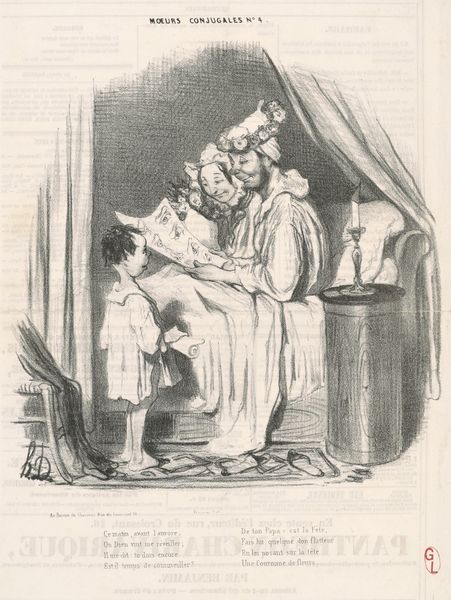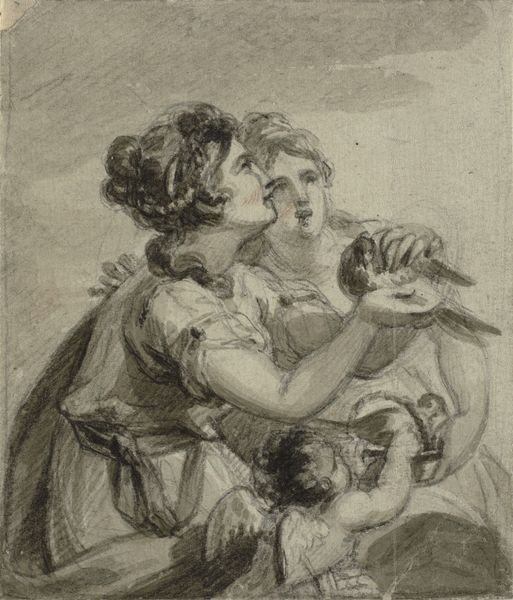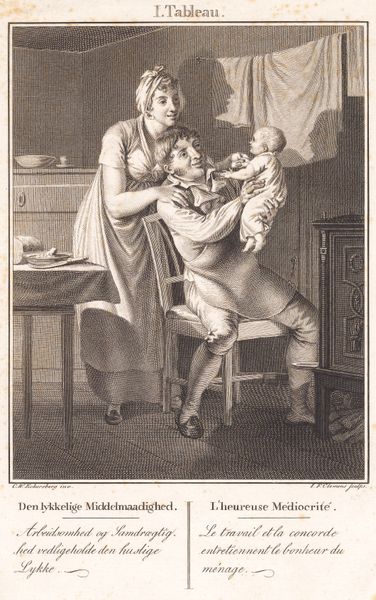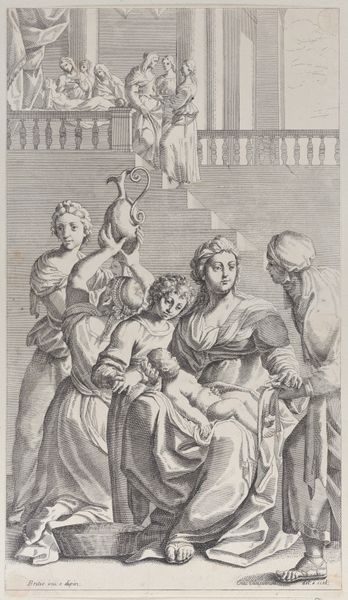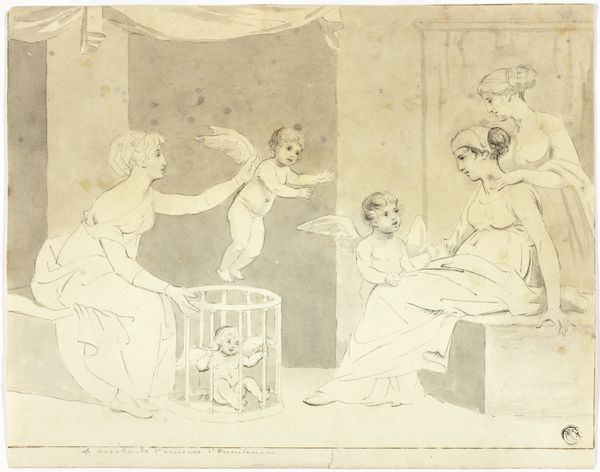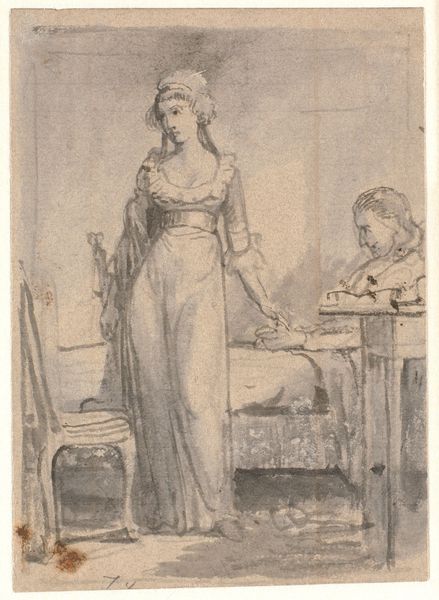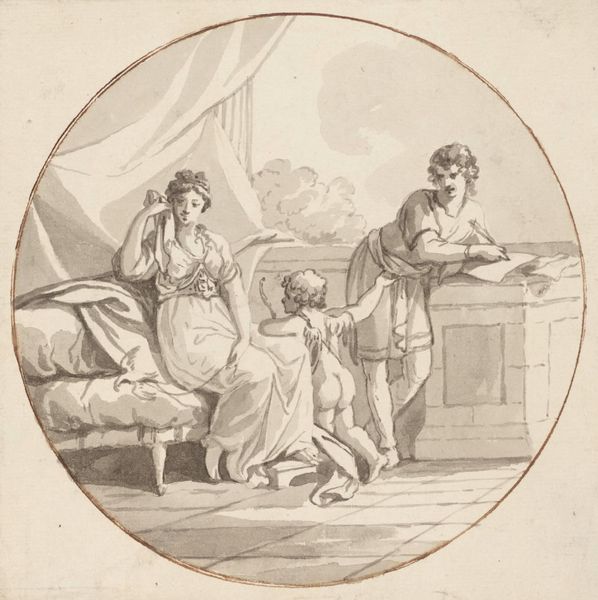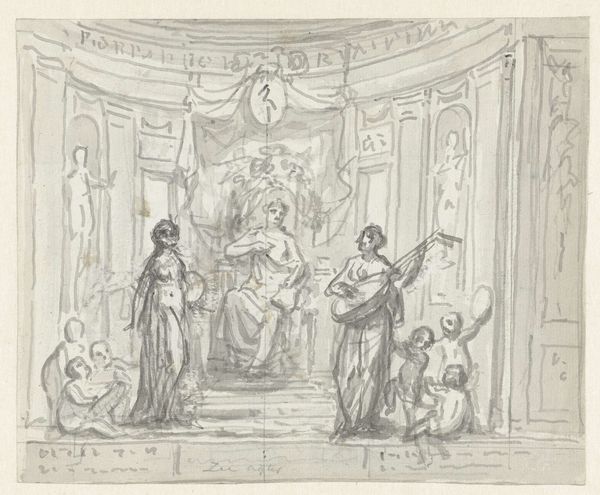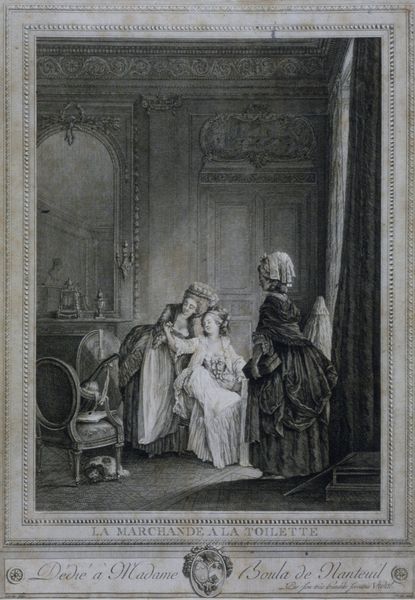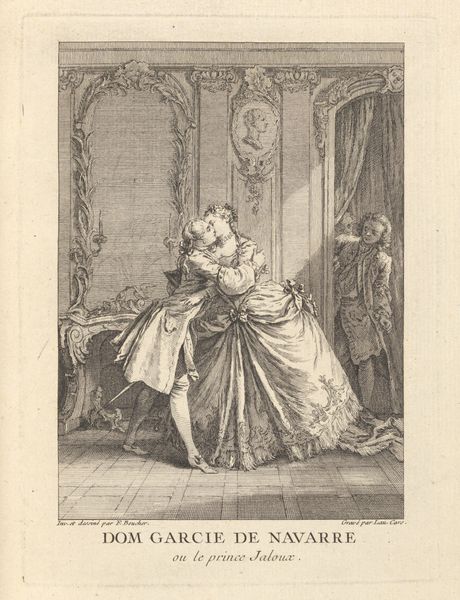
drawing, print, gouache, paper, ink, graphite, pen
#
portrait
#
drawing
# print
#
gouache
#
figuration
#
paper
#
ink
#
romanticism
#
graphite
#
pen
#
genre-painting
#
charcoal
Dimensions: 457 × 311 mm
Copyright: Public Domain
Curator: Fuseli's "Mother and Her Family in the Country," created between 1806 and 1807, offers us a glimpse into domestic life rendered with dramatic flair. The drawing combines pen, ink, graphite, and gouache on paper, currently residing here at the Art Institute of Chicago. Editor: My immediate impression is one of restrained dynamism. The grayscale palette focuses attention on the composition, dominated by these almost theatrically posed figures and their interactions with light and shadow. Curator: Indeed, Fuseli uses the pen and ink to articulate crisp outlines, defining the volumes with remarkable precision. The structural elements, the drapery folds, the architectural setting are rendered as expressive forms in themselves. Consider the vertical thrust of the column balanced by the sweeping curve of the mother's arm. Editor: Let's also consider the production itself. This meticulous use of multiple drawing materials points to a deliberate crafting of an image for consumption. The use of pen and ink particularly interests me, considering its function in illustrations and widespread dissemination via printmaking during that era. Was this intended for a wider audience beyond the traditional art patronage system? Curator: That is an intriguing angle. Perhaps Fuseli aimed to engage the rising middle class who sought depictions of virtue and sentimentality alongside elevated aesthetic values. The interplay between graphic line and washes of color evokes both Neoclassical formality and Romantic emotionality. Editor: I'd emphasize how Fuseli utilizes materials to construct an aspirational vision of family, gently blurring boundaries between intimate artwork and commercial representation. Think about access: prints allowed many to own art, so it’s important to explore that intersection of labor, craft, and dissemination that underscores this "domestic" tableau. Curator: Your point reminds us that the home was, in the early 19th century, both a private sphere and a public performance. The very act of depicting it engages social dynamics. Editor: Exactly. Thanks to a detailed look into materials and processes, we begin to see an intimate, idealized artwork enmeshed in a budding consumer landscape, thus providing a unique insight. Curator: Quite right, and this interplay of formalism and social history illuminates the art’s multiple layers of meaning.
Comments
No comments
Be the first to comment and join the conversation on the ultimate creative platform.
